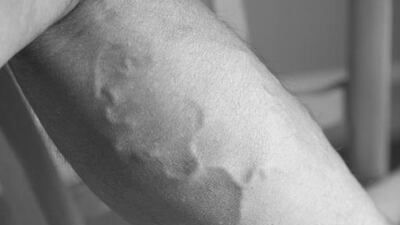Unsightly, uncomfortable and often associated with women of a certain age, varicose veins actually affect about one in three people.
Dark purple or blue in colour, with a lumpy or rope-like appearance, there are a number of causes and contributing factors including gender, genetics, pregnancy, excess weight and occupation.
Cause and effect
“Varicose veins are veins that are abnormally swollen. The condition occurs when valves in the veins that keep blood flowing towards the heart falter, causing blood to collect in them,” says Dr Francesco Serino from the Heart & Vascular Institute at Cleveland Clinic Abu Dhabi.
These weakened valves and vein walls, which can become stretched and lose their elasticity, are commonly found in legs and calves because standing and walking puts extra pressure on the veins in our lower body.
Pregnancy also stresses the veins, and increased hormone levels can cause relaxation of the muscle walls, which increases the likelihood of developing varicose veins.
According to Serino, varicose veins are fairly common among men and women, affecting about half of all women between the ages of 40 and 50, and the condition can be intensified by obesity, family history or an inactive lifestyle.
“While living in a hot climate does not in itself cause varicose veins, the heat can make it worse. In warm weather, our body releases heat by widening veins, bringing blood closer to the skin surface in order to cool down,” he says.
Jobs that require extended periods of standing, or sitting for too long, can also increase the risk, with heavy, achy legs, swollen feet and ankles, and muscle cramps affecting those with the condition.
To treat or not to treat
While varicose veins may be uncomfortable to look at, if they don’t affect circulation or have any other negative long-term health effects, treatment isn’t necessary.
According to Serino: “Varicose veins are typically more of a cosmetic concern than a medical one, but if they make walking or standing painful, you should contact your doctor immediately. The major concern with varicose veins is the potential for the veins to become inflamed or to develop blood clots, or for skin ulcers to appear around them due to poor oxygen circulation.”
Treatments include endothermal ablation, which uses heat energy via a laser or radio frequency to seal the affected veins; laser or sclerotherapy, whereby a special saline or chemical solution is injected to close the vein; or ligation and stripping, a surgical procedure that entirely removes the affected veins.
Prevention in the form of lifestyle changes is recommended if you want to reduce the risk of developing varicose veins or ease existing symptoms.
“As with many other heart and vascular conditions, the best way to reduce the risk of developing varicose veins is to maintain a healthy body weight, avoid crossing your legs when you sit down and avoid standing or sitting for a long time,” says Serino.
Getting up from your desk and moving every 30 minutes, or taking regular breaks are simple solutions, along with introducing exercise to your daily routine, which will help improve circulation.
“If your job or daily routine sees you standing for a long time without a break to rest and raise your legs, then your doctor may recommend you wear compression stockings,” says Serino. “These gently squeeze the leg, which helps stop blood from pooling in the veins.”

